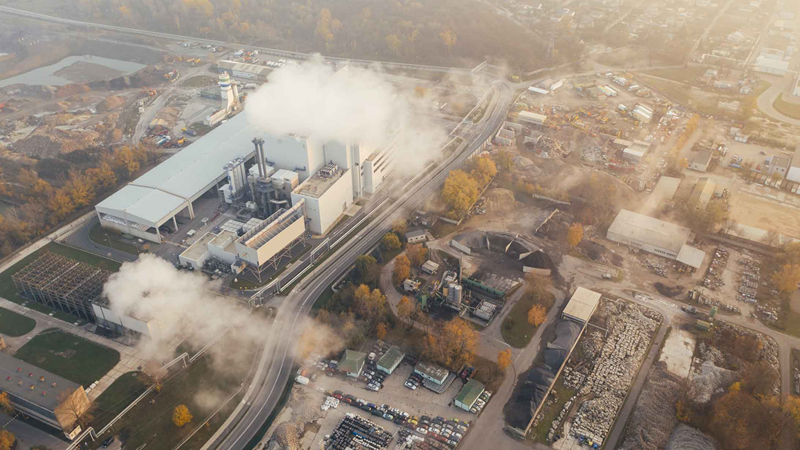Operating in a net zero world: time is ticking
We live in a world where technology and infrastructure are developing fast. Businesses globally have recognised the need to take action now to reduce their impact on the environment and pursue a more sustainable world, committing to net zero carbon targets over the next 30 years.
We are acutely aware of the impact the built environment has on climate change – around 40% of man-made global carbon emissions come from the construction and operation of buildings, with nearly 30% of that figure attributed to the operation alone.
We’re not short of proven energy, water and carbon reducing interventions. The time to act is now. No matter how big or small the business, here are five ways to reduce carbon emissions in daily commercial real estate use.
Switch energy sources and tackle efficiency
The electricity, gas and diesel used to operate building and HVAC systems contribute to carbon emissions. Where systems are running excessively, or inefficiently, energy is wasted and carbon emissions increase.
Research has shown that during the height of the pandemic, when global occupancy rates dropped to just 20%, commercial buildings were still consuming, on average, 80% or more of their usual energy levels.
Using technology to identify inefficiencies and make more informed, data-driven decisions allows us to invest our time and resources more effectively. In addition to installing meters to provide accurate consumption data, we can also install, or retrofit energy reducing technologies, including sensors and technology that uses less energy – such as LED lighting – to lower energy usage and waste.
Additionally, businesses can phase out the use of gas and diesel HVAC and plant machinery and choose to switch to a 100% renewable electricity utility supplier to reduce carbon emissions.
Reduce water consumption
Water usage and processing also contributes to the carbon emissions produced by a business. The energy needed to move, treat and use water can equate to as much as 5% of total carbon emissions for that building. There’s also the growing issue of water scarcity globally to consider when reducing usage.
Water that must be processed and treated contributes to the emissions of the water industry, with wasted water being unnecessarily processed. On average for every 1 million litres of water consumed produces 344 kg carbon dioxide, with water discharged contributing as much as 708 kg carbon dioxide.
Using a water meter to measure usage and installing methods to reduce the amount of water used, such as reduced flush toilets and taps with sensor switches can reduce the amount of water used and eventually wasted and processed unnecessarily.
Separate and reduce daily building waste
Waste produced by commercial real estate contributes to carbon emissions at the point of processing, much like water. Unlike energy usage, the impact waste has on carbon contributions isn’t as a direct result of the building operations, and so falls into the scope 3 emissions of embodied carbon.
Waste produced in workplaces is collected and removed for processing, any waste not separated for recycling will ultimately end up in landfill or sent for incineration. To reduce these figures, facilities teams should measure and report the volume and types of building waste, to establish what on-site facilities are required to separate waste types.
Reviewing waste contractors and the destination is also important. There is a growing need to ensure our waste is not being offshored - just shipped to other countries to deal with. Additionally, waste to energy (or incineration) is better than landfill, but still emits carbon, so we should also try to shift away from that.
Say goodbye to single use plastics
In addition to general waste produced on site, the consumption of single use plastics such as cups, straws and packaging also contribute to carbon emissions. Not just via the carbon associated with handling them as waste, but the needless embodied carbon associated with mass production of single use products.
Single use plastics routinely end up in the world’s oceans, polluting natural habitats. They also contribute to carbon emissions through the disposal and eventual break down in landfill, or incineration.
Businesses should make every effort to map their usage of single use plastics, and eliminate, procuring sustainable alternatives that promote reusing items – such as reusable mugs, or metal straws.
Keep refrigerants in check
Refrigeration represents a growing source of greenhouse gases. Hydrofluorocarbons (HFCs) are 1,400 times more potent than carbon dioxide as a greenhouse gas and represent 1.5% of total warming potential today.
HFCs have for a long time been known for their damaging impact on the Ozone layer, but considering their potency compared to carbon dioxide in the warming of the planet, should be handled and disposed of with great care.
Measures should be taken in the maintenance of refrigeration systems, and any leaks should be measured and reported as soon as they are observed. Preventative maintenance on refrigerant systems will reduce the risk of leaks and while we aim to reduce leakage, we should also be exploring opportunities to replace refrigerants with those that are less harmful to our environment.











